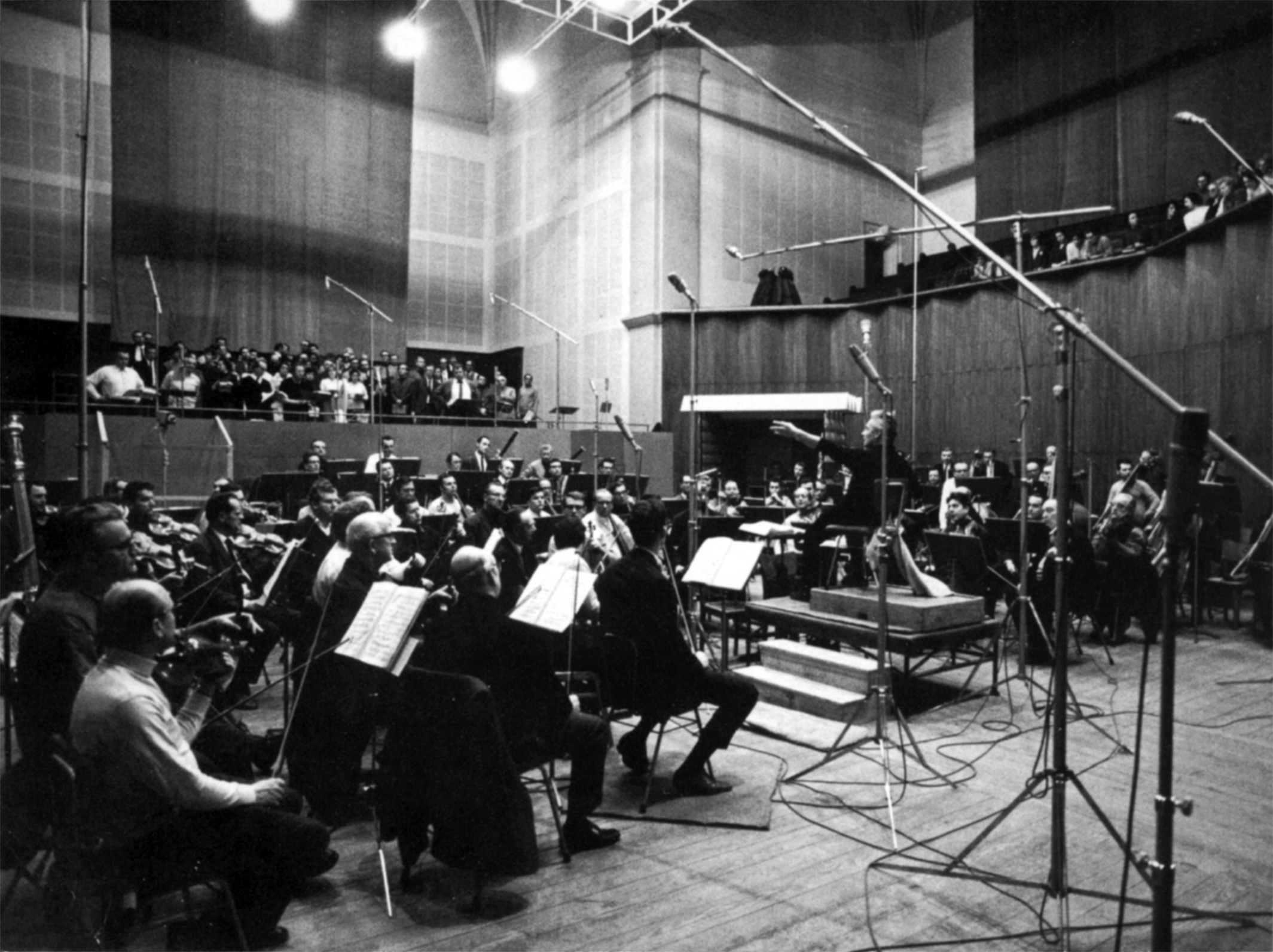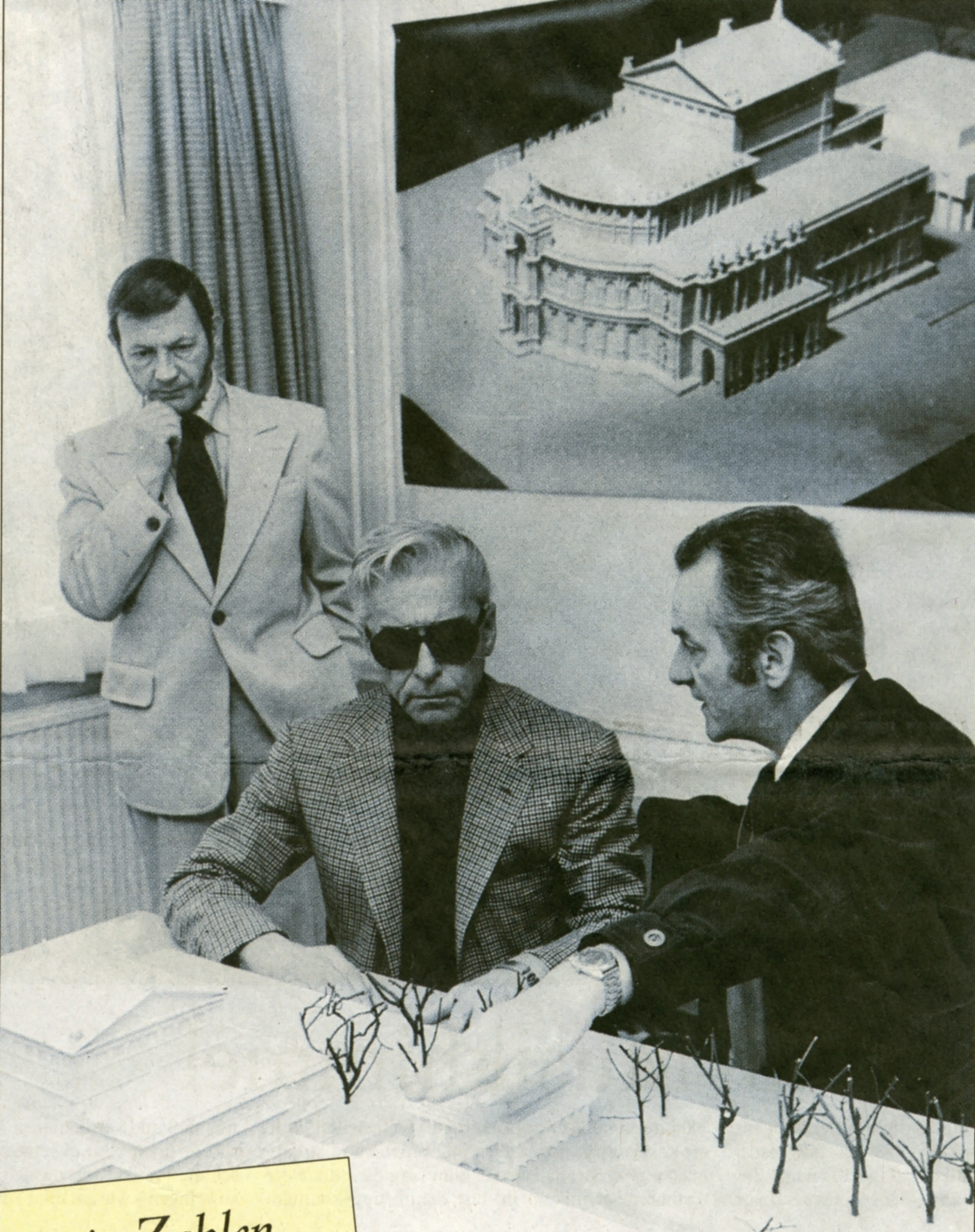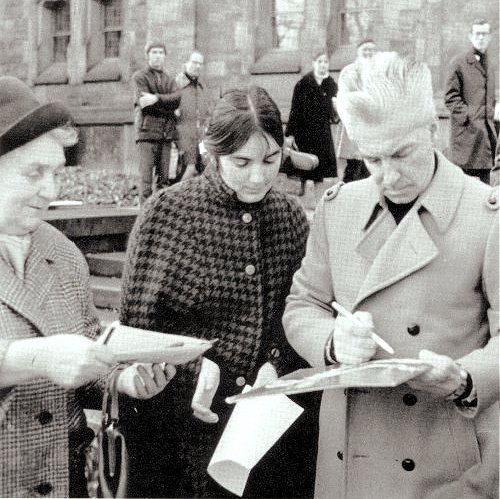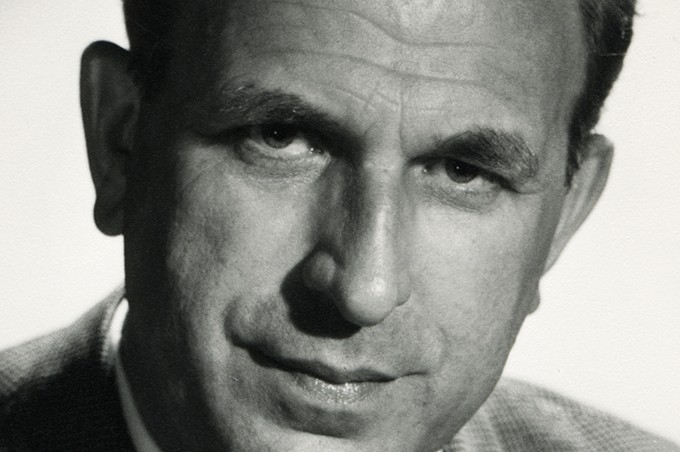13 October 2023
P.R. Jenkins
Karajan artists: The Staatskapelle Dresden – “like ancient gold”

“Good heavens, do they all play on Stradivaris?”
Dmitri Shostakovich listening to the sound of the Staatskapelle Dresden
In 1965, Karajan invited the Staatskapelle Dresden for the first time to the Salzburg Festival for a series of five concerts under the baton of George Szell, Karl Böhm, Wolfgang Sawallisch and Kurt Sanderling. Karajan himself conducted a concert with Dvořák’s 8th Symphony and Tchaikovsky’s 1st piano concerto played by Sviatoslav Richter.
The Staatskapelle Dresden, founded in 1548, is the oldest orchestra in the world and one of the best – associated with composers like Schütz, Weber, Wagner (he called it “Die Wunderharfe” – “The Magic Harp”) and Richard Strauss, who entrusted the first performances of no fewer than nine of his operas to this orchestra. Like the Vienna Philharmonic, the Staatskapelle is both a concert and an opera orchestra.
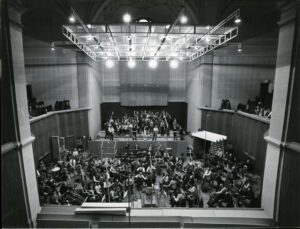
Karajan’s and the Staatskapelle Dresden’s only studio recording was Wagner’s “Die Meistersinger von Nürnberg” in 1970 (also Karajan’s only studio recording of this piece). The recording took place in a church in Dresden and twenty-one sessions were planned but the collaboration between conductor, cast, choir and orchestra was so effortless that it only took thirteen.
After having recorded the last bars, Karajan held a short speech. René Kollo, the Stolzing on the recording, suggested making printed copies for everyone involved. But suddenly a mysterious figure sprang up from nowhere and said this would be permitted. He was a member of the East German secret service who had been observing the recording sessions the whole time. This studio recording was to remain the only one made by Karajan with the Staatskapelle Dresden. There were plans to do the four Brahms symphonies together but the difficulties with the East German government proved insuperable.
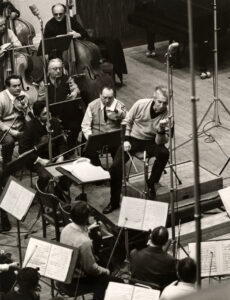
© Historisches Archiv der Sächsischen Staatstheater, Fotograf Siegfried Lauterwasser
Our institute has in its possession this brief letter Karajan sent to the Staatskapelle shortly after the recording. It says: “To my friends from the Staatskapelle: Many thanks for a week of the most wonderful music making Herbert von Karajan”
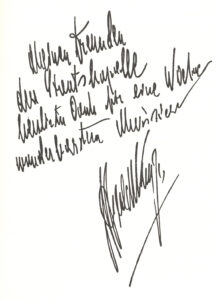
Karajan and the Staatskapelle Dresden met again at the Salzburg Festival in 1972. For Bartók’s 3rd piano concerto they were joined by Géza Anda, one of the pianists Karajan regularly worked with and who “played with astonishing beauty and determination (Richard Osborne)”. The combination with Karajan’s favourite Schumann symphony No 4 made it quite a short concert but later made it feasible to issue the live recording of the two pieces on a single CD.
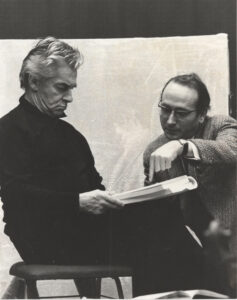
© Historisches Archiv der Sächsischen Staatstheater, Fotograf Wolfgang Wahrig
Having performed Shostakovich’s Eighth under Kurt Sanderling at their first Salzburg series in 1965, it was Karajan’s turn to conduct the Tenth in 1976. In the first half, Emil Gilels – performing only once with Karajan – played Beethoven’s 3rd piano concerto. (The Shostakovich was recorded live and was released by our institute on a special-edition CD to mark the 50th anniversary of the Salzburg Easter Festival in 2017.)
This was the last time Karajan and the Staatskapelle collaborated, but they never lost contact and even in his very last years Karajan was thinking about inviting the Dresden orchestra to Salzburg once more. In 1978, he wrote a short greeting on the occasion of the rebuilding of the Semperoper: “My best wishes for a success of the magnificent project of the new Semperoper Herbert von Karajan”

Shortly after Karajan’s death in 1989, the Staatskapelle wrote this letter of condolence, which our institute has in its possession:
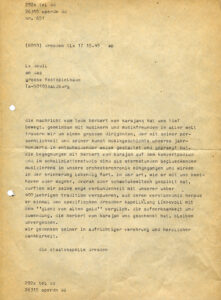
“The death of Herbert von Karajan has deeply moved us. Together with musicians and music-lovers all over the world we grieve for a great conductor who shaped and inspired the music of our century significantly with his artistic personality. The encounters with Herbert von Karajan in concert and in the studio remain magical moments of delightful music making in the history of our orchestra and will keep their place in our memory. Interpreting Beethoven and Wagner, Dvořák and Shostakovich with him, we could feel his deep understanding of our more than 400-years tradition, which inspired him to compare the sound of the Staatskapelle Dresden to ‘the sheen of ancient gold’. The care and regard he gave us are unforgettable. We think of him with honest respect and sincere gratitude. The Staatskapelle Dresden”
Karajan’s term “wie altes Gold” (“like ancient gold”) to describe the Dresden sound obviously inspired the title of the opulent book marking the 450th anniversary of the Staatskapelle in 1998.

© Historisches Archiv der Sächsischen Staatstheater, Fotograf Wolfgang Wahrig
